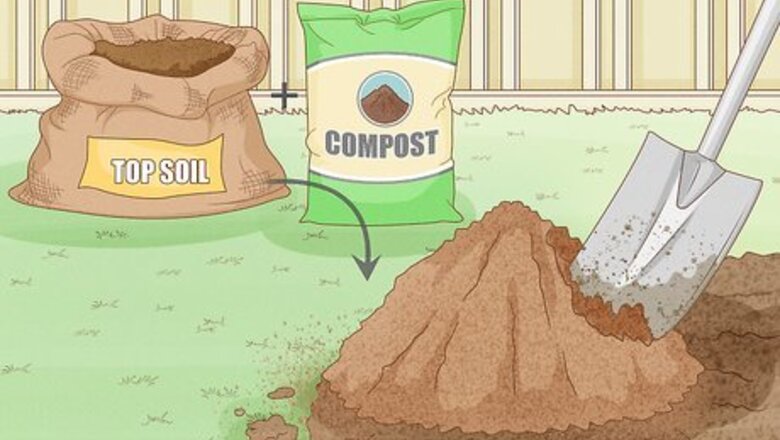
views
What’s the best soil for a raised bed?
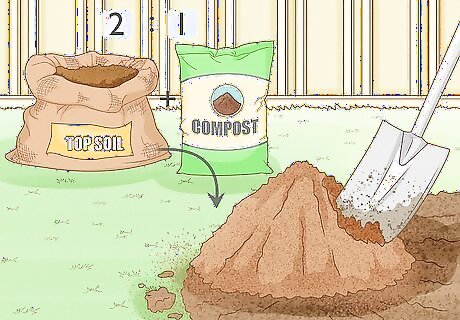
A 2:1 mix of compost and topsoil soil makes great raised bed soil. If you're buying bags to fill the beds, aim for a mix of 2 parts topsoil with 1 part compost. If you're using some soil from your garden or your beds already have soil in them, add 4 to 6 inches (10 to 15 cm) of compost. Then, till them together until the soil is mixed. The compost provides rich, organic nutrients for plants. You can also mix shredded leaves, vermicompost, or mushroom compost as part of the compost ratio. Choose topsoil that's loamy, which means it's loose and not very compact. This allows water to drain and prevents the soil from compacting. If you're filling several beds, find out if local nurseries or home improvements stores can deliver a bulk shipment of topsoil or compost. A 3 to 1 ratio of compost to soil can also work well.
Is it okay to fill my raised beds with ground soil from my yard?
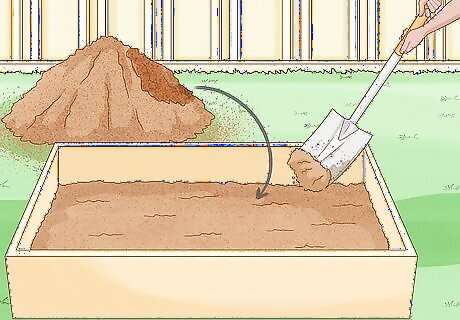
It's fine to use ground soil as long as you add compost. Only use ground or native soil if you know there aren't pathogens or pests in it. If you are lucky enough to have healthy soil, go ahead and use it! To determine what nutrients are in your soil, buy inexpensive soil testing kits from most nurseries or home improvement stores. Then, you can amend the soil if it needs a specific nutrient. If you've got sandy or clay ground soil, compost improves drainage and the texture of the soil. If you've got soil that doesn't hold moisture well, use vermicompost instead of traditional compost. Worm castings mixed into the soil does a better job of improving the soil texture, so it holds onto moisture longer.
What's the difference between garden soil and raised bed soil?
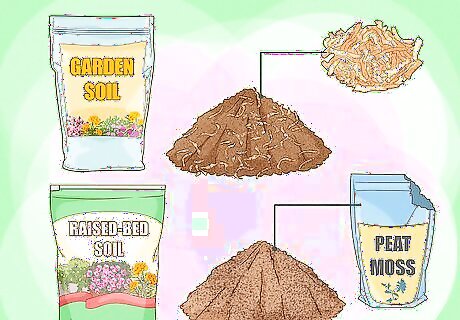
They're very similar, but raised bed soil has peat moss added to it. Garden soil is essentially topsoil that has shredded wood products added to it. Raised bed soil takes it a step further—it's basically garden soil with peat moss and nutrients added to it. Raised bed soil holds moisture and nutrients longer than garden soil. If you can't find raised bed soil, you can simply mix together compost with topsoil in equal parts, or add compost to garden soil.
How can I save money when filling my raised bed?
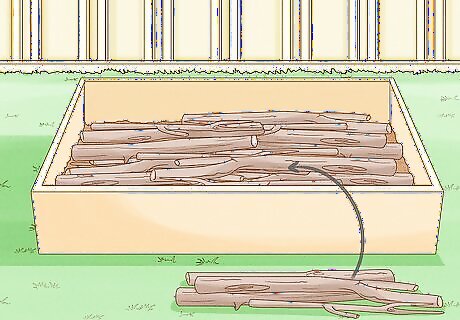
Place sticks or logs in the bottom of your raised bed. Instead of filling an entire raised bed with soil, scatter tree branches, logs, wood chips, or sticks in the bottom before you add soil. The wood products take up space, so you don't need as much soil. Plus, the wood products break down over time, adding bulk to your raised bed.
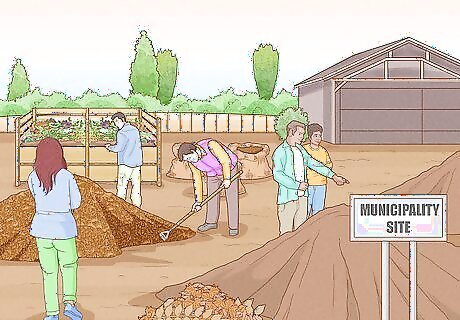
Check with your town or local schools to see if they have free supplies. Sometimes, municipalities offer free soil, wood chips, or compost during the spring or fall seasons. This is a great way to prepare your garden for free! Ask your neighbors if they'd like to go in on collecting gardening materials. You may be able to get a load delivered if it's in bulk.
How do I fill my raised garden bed?
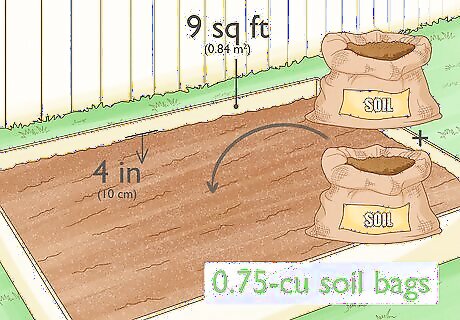
Determine how much soil your bed needs. Search for a free online soil calculator. You can either enter the square footage of your raised garden beds or enter the length, width, and depth of each bed. The calculator automatically figures out how many bags of soil you need. For example, if you've got a raised bed that's 9 square feet (0.84 m) and you'd like the soil to be 4 inches (10 cm) deep, you'll need four 0.75-cu bags of soil.
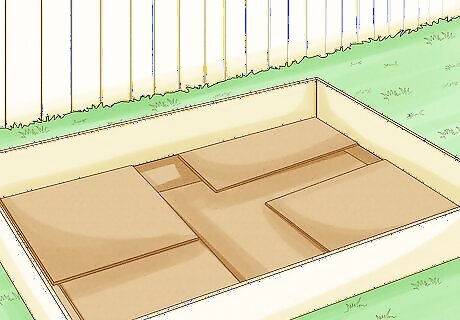
Lay down cardboard to smother weeds. Break down a large cardboard box to get flat pieces. Spread these in a single layer on the bottom of your raised bed. The cardboard prevents weeds from growing and they'll eventually break down, adding bulk to your garden bed. If you don't have cardboard to use, spread sheets of newspaper. They'll break down faster than the cardboard, but they can prevent weeds.
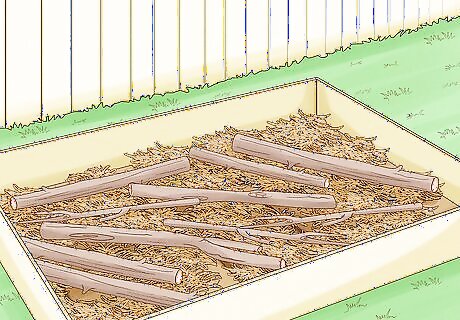
Arrange organic materials like sticks, logs, or hay in the bottom of the bed. The materials add bulk to the bed, so you don't have to use as much soil. Then, spread a layer of compost over the sticks, logs, or hay. All of these things break down to add carbon and nitrogen to the soil. Spray water over each layer to moisten it before you add more material.
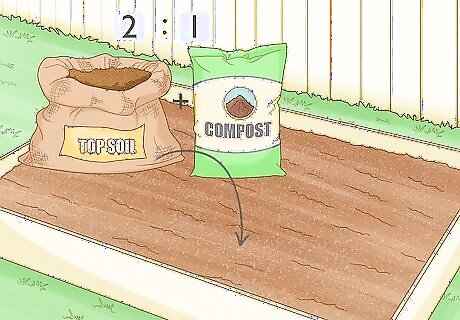
Fill the bed with your mix of topsoil and compost. You can pour equal parts compost and topsoil into the bed and mix it together with a spade or digging fork. Keep filling the bed until it's 1 to 2 inches (2.5 to 5.1 cm) from the top of the bed frame. You'll find that the soil level sinks after a few seasons. This is completely normal! You'll just need to top up your raised beds with compost before the next gardening season.
Do I have to add compost to my raised garden beds?
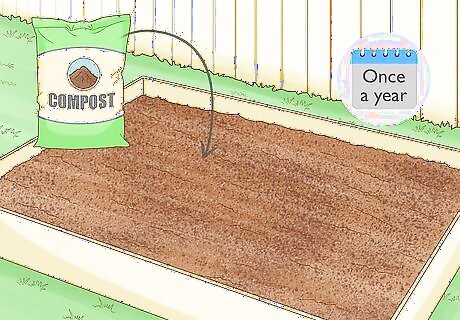
It's a good idea to add compost once a year to replenish nutrients. At the end of the growing season, top up the soil in your raised beds with 1 to 3 inches (2.5 to 7.6 cm) of your own compost or compost you've bought. Mix it into the existing soil, so the nutrients get into the bed. You can purchase different types of compost like mushroom compost or poultry compost. Try to use different compost types every few seasons to add a variety of nutrients to the beds. If you use your own compost, make sure that it's completely decomposed first. Compost is completely decomposed when it no longer smells and you can no longer see visible food scraps in the mixture.




















Comments
0 comment